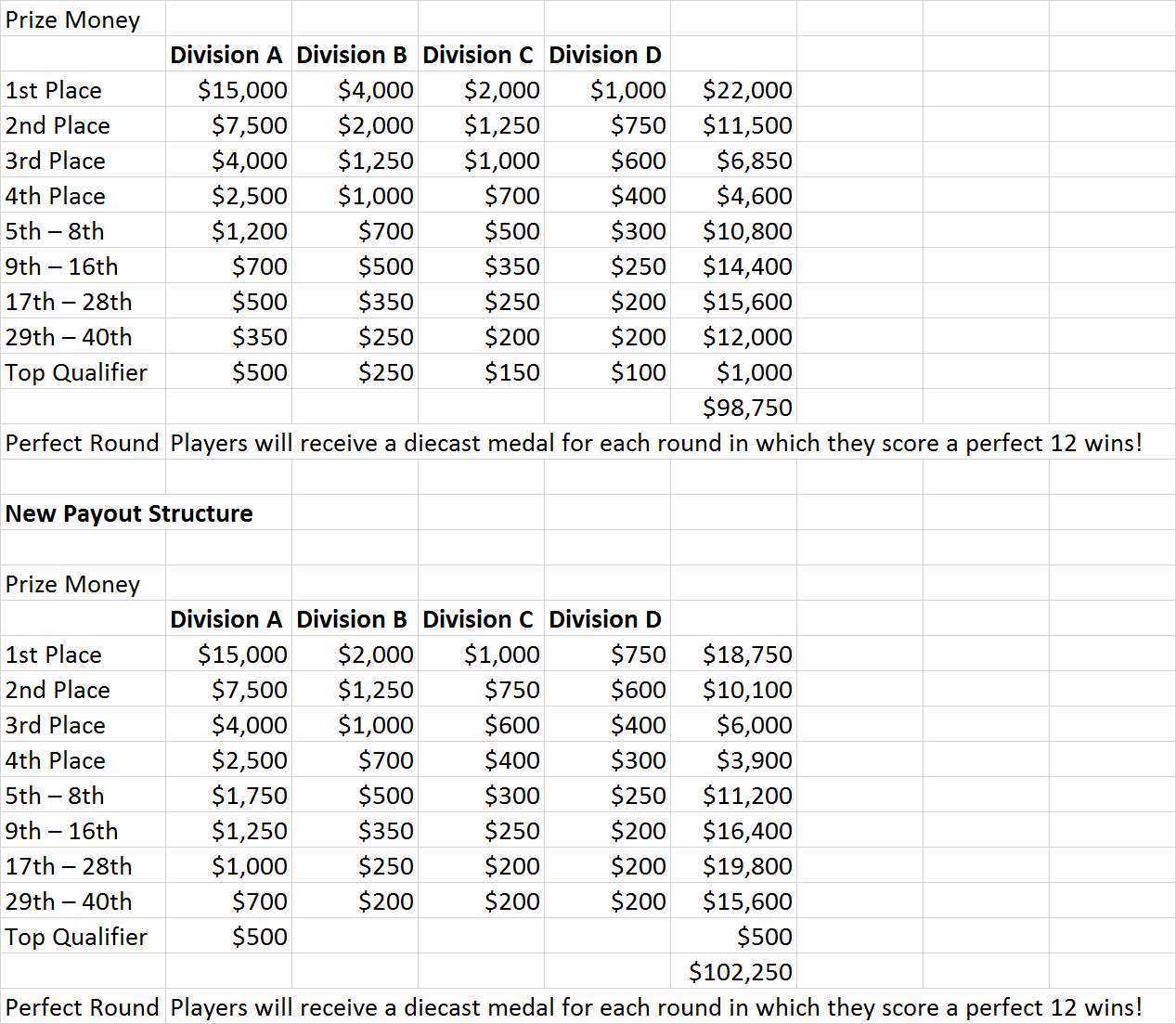What Pinburgh has failed to address is that people compete for more than one reason. Some want to see how high a division they can qualify in. Others want to qualify reasonably high, but have a realistic chance to win something. Those two are NOT incompatible.
The real solution is to allow people to choose a division in advance, if they want to, subject to suitable limits, i.e. you can’t play below your restricted division. Those who don’t want to choose, or fail to specify, play as they do now and end up wherever they end up.
As for people having a point advantage if they outperform their chosen division, simple: reset the points to zero for ALL but A division after round 5. Right now, the point range for B and C is fairly narrow anyway, so for people who “earned” B or C, that’s no big deal, no one is advantaged or disadvantaged more than two or three points in the process [just two points this year, not counting restricted players]. But those who “played high” yet chose to stay lower don’t get to cash that in because they chose to play it safe.
As for the argument, “well if they would have qualified for A, they should play in A,” that’s B.S. This format is too short to
say that someone who would have qualified in A needs to be there; look at the rakings of those who did qualify. While the rankings aren’t perfect, they’re based on much more statistical evidence than 5 Pinburgh rounds. Get hot, get lucky, play machines you know better than your opponents, play softer than average opponents, etc. … there’s lots of ways to get into A. I wouldn’t force someone into A who knows that once they’re playing against just the A players, they’re likely toast and have little to look forward to day two if winning something was their goal.
“Oh, but then we won’t know how to properly split the divisions, etc. …” Not a problem. Require people to specify at the time they register. You’ll then know just how many people are opting for each, and if that presents a problem as regards splitting things up into 4 roughly-equal sized divisions, then maybe they shouldn’t be that equal. Either way, you’ll have time to adjust field sizes and make mild tweaks to the prizes, if needed, to make it all work. And I’ll help you if you need me to.
Since the people who chose a division would have no motivation to play well or not day 1, they should be separated from the other players and not have their results included for rounds 1-5. They could still be allowed to practice on and enjoy the machines in use, and could be grouped against each other in warm up foursomes at the same time as the regular division-setting rounds take place. This would preserve the social aspect of Pinburgh, i.e. playing against a bunch of people, many of whom you’ve never met, of varying skill levels on a wide variety of machines. It could even be done as a side tournament - - no WPPRS, but some kind of modest prizes to motivate them to play well during these for-them practice rounds. If the organizers wanted to, they could instead impose a penalty of sorts on those players by instead locking them out of the qualifying banks and just letting them play the open banks elsewhere in the show. I think keeping the social part in is the better choice.
I know there’s a way to make this work and I think this is close to it.
